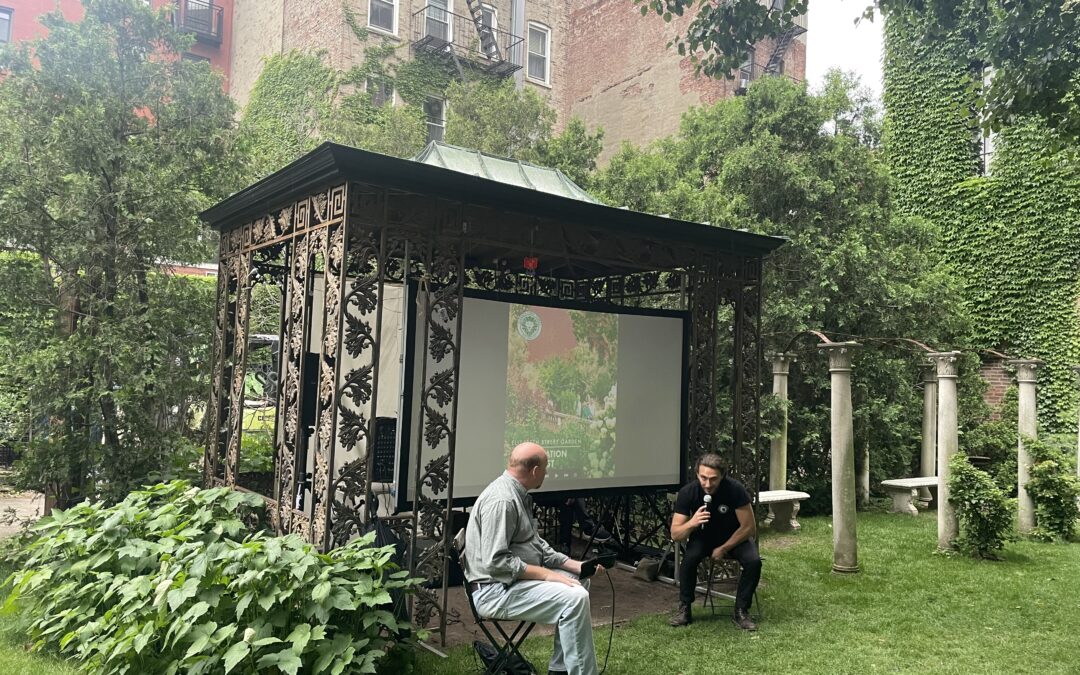On a rainy summer solstice, amidst the sculptures of the Elizabeth Street Garden (ESG),
community members, city council representatives, volunteers, and garden lovers convened for
Elizabeth Street Garden’s town hall event which put a spotlight on where the fate of the garden
stands at present and the kind of future that it’s advocacy leadership envisions.
Much of the evening was spent going over the conservation land trust report, a concise document (available
on ESG’s website) which summarizes the extent of its community support, the history of the garden,
and its plan for maintaining the ESG as a unique public green space. A crucial part of this plan
is ensuring that the ESG becomes a Conservation Land Trust (CLT): a nonprofit organization
that owns and manages land. The ESG already functions as a CLT, so the last step would be a
simple transfer of ownership from the city to the ESG nonprofit which takes care of the garden
already.
According to the report, The Elizabeth street garden acting as CLT would allow for the
garden to maintain its unique qualities, it’s financial independence, and, most importantly, its
community governance. Joe Reiver, the garden’s de facto leader, even discussed future plans
for a new greenhouse conservatory for year round gardening. This would also include public
school programs which would expand curriculum by allowing students to learn about seed
growth and winter harvesting. The Townhall largely put the ball in the City’s court. “If the city
can sell this land to a developer for $1, they can sell it to the community for $1,” says Mr. Reiver.
The land, which was slated to be developed into an affordable housing complex in 2012, has
acted as a constant point of contention between the community and the city for the past decade.
The dilemma is often represented by a dichotomy which pits affordable housing against the
need for public green space; however, many ESG advocates deem this dichotomy ‘a false
choice.’
“There are many more productive alternatives for achieving affordable housing without
destroying heavily-used community green space,” says Joe Reiver, “Our focus has been on 388
Hudson where an empty lot can provide up to five times the amount of housing in addition to
more passive open space. There is also the potential to convert underutilized hotels and empty
office space into housing. These alternative solutions actually achieve more housing and more
green space without either coming at the expense of the other.” Solutions like these suggest
that there is hope and growing optimism for the continued existence of the Garden. Deborah
Glick, representative of assembly district sixty-six, addressed the crowd at the townhall last
Tuesday to not give up hope. “This space is owned by the people of New York and that’s You,”
says Deborah Glick; with a little time, and the enduring strength of the ESG advocacy group,
there’s good reason to believe that the garden will remain in the hands of the community for
many years to come.
To Learn more about the ESG check out elizabethstreetgarden.com
Cover Photo by Cade Callen.

